
Demonstration
China and Korea
The skills of the masters that have been handed down
Date and time: Sunday, November 30
①Morning section 10:30 to 12:00
②In the afternoon, 13:30-15:00
Venue: Takenaka Carpentry Tools Museum Workshop Room
Instructor: ①Morning section: [South Korea] Shin Unshu (Shin Unshu)
②In the afternoon: [China] Ri-Eikaku
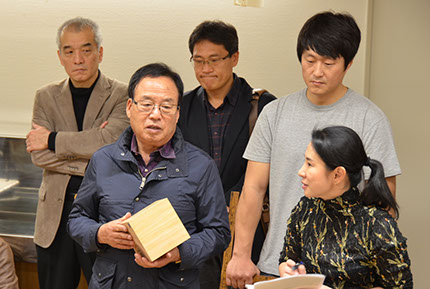
The morning section is the technique of Korean masters. First, I would like to explain Akamatsu, which is used for palace architecture. In Japan, pine has a strong image of a bent tree, but Akamatsu, used in Korean palaces, seems to use it in search of something that stretches straight up filled with annual rings grown in cold regions.
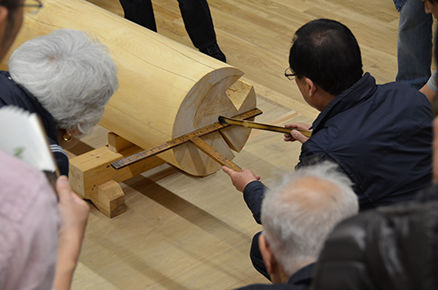
Next is the demonstration of T-shaped Ruler. T-shaped Ruler is a tool used for inking on large parts such as pillars and beams, and is the most commonly used tool by Korean masters. T-shaped Ruler is made by the ridge itself according to the diameter of the pillar at each site.
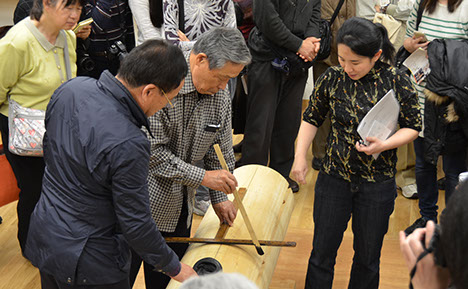
It is also done in T-shaped Ruler to draw straight lines on a round pillar. The customer actually did it too. In the straight line, the sumisashi is attached to the T ruler, and the left and right half are drawn from the bottom to the center line. It is surprisingly difficult to draw straight lines with thin lines, and requires skilled skills.
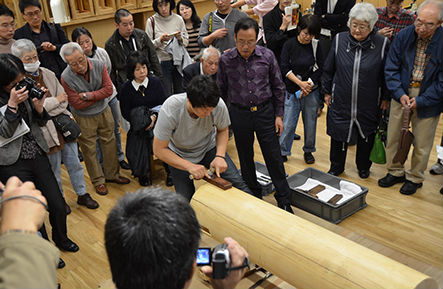
Next, how to use the plane. The Korean plane was originally pushed and used as in China, but at present it seems that many sites use it as in Japan. However, he was taught by his teacher to push and use it. Compared to the time of pulling and using when pushing, it is more difficult to pull, and it is said that pushing is less burden on the body.
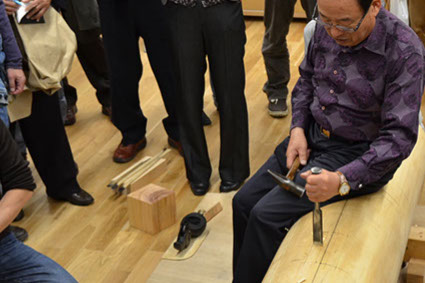
Finally, the chisel (only). The original chisel in Korea has no wooden pattern, all made of iron. Akamatsu is hard, so it is better to be made of iron, considering the efficiency of work.
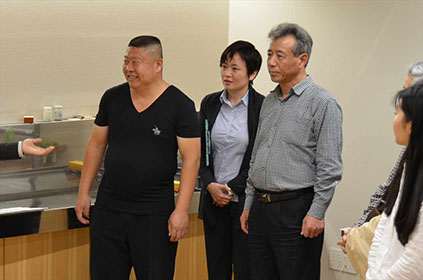
The afternoon section is the skill of Chinese masters. In addition to Mr. Lee Eigau of Instructor, Mr. Okina of the National Palace Museum also participated.
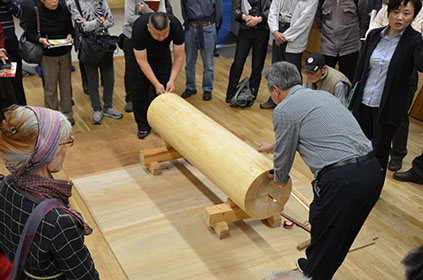
First, the log is regarded as a side pillar, and the pillar is inked. The center line, the reference line for inner rolling, the position of hozo, etc. were drawn, and the ink symbol representing each was also introduced. It seems that you will be mistaken, such as writing "&" for valid lines and "○" for invalid lines, but it is a rule that carpenters must know.
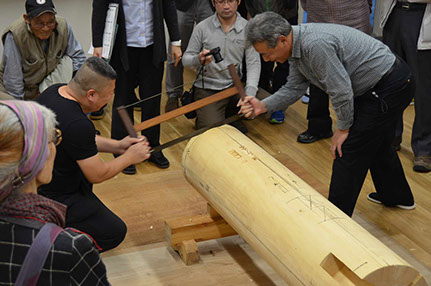
Next is the demonstration of the saw. The Chinese frame saw (Wakunoko) can be pulled by two people (actually using a larger saw). As for the work attitude, it seems that the senior will be up.
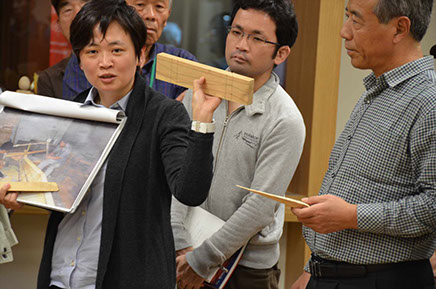
Next, he explained how to make the Hiendaruki in the corner. It is said that a rafter at a symmetrical position on both sides of the corner tree is cut out from a single material. There were many people who were involved in architectural practice at the venue, and they seemed curious.
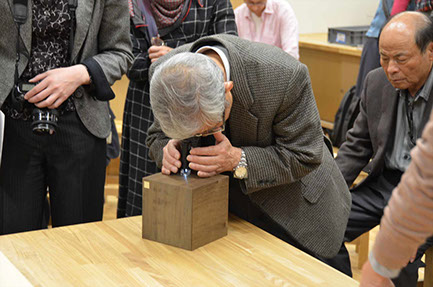
This is an introduction of a tree called Kusuki (Nanboku) used in Chinese palace architecture. Participants looked at the loupe in order because the fibers seemed to glow like gold thread when they expanded.
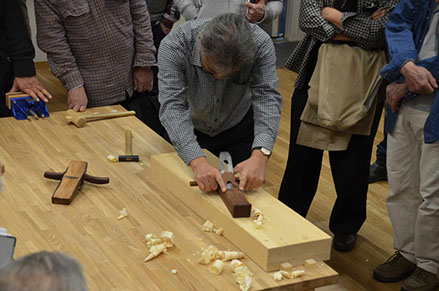
Finally, the demonstration of planes. The Chinese plane is used by pushing, but in the demonstration, he explained the difference while pushing and pulling.
There were many questions from the venue for each demonstration. Thank you very much to everyone who participated, including the ridge beam who answered carefully.
At the Nagoya venue, a demonstration by Mio Ogawa (February 15, 2015) is scheduled to be held. This is a unique opportunity to see the unique techniques of Japanese ridges that are different from China and Korea, so please come and visit us.
Takenaka Carpentry Tools Museum | Home | Highlights | Event | Venue Information | Contact | Press Releases
Copyright 2014 TAKENAKA CARPENTRY TOOLS MUSEUM. All rights reserved.